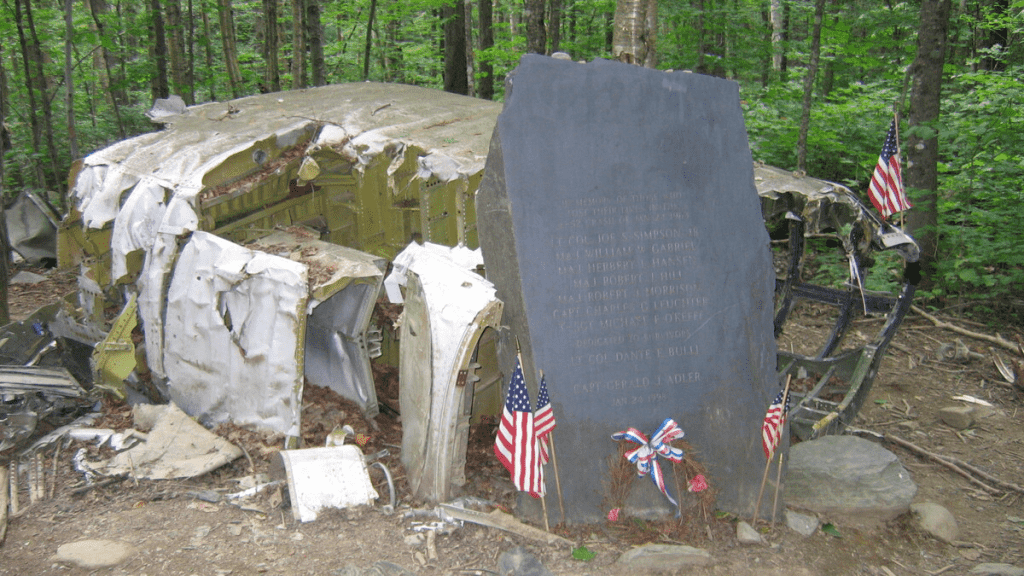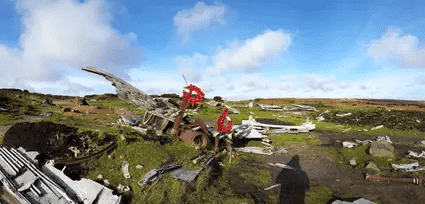During the cold war era, on January 24, 1963, a B-52 bomber aircraft crashed in a very unfortunate incident on the foothills of Elephant Mountain in Maine. The aircraft was on a routine training mission when it lost control of its vertical stabilizer. But the most intriguing thing about the incident is that authorities haven’t removed the wreckage of the plane from the crash site, and eventually, it became a memorial site for visitors to come and pay tribute to the fallen. As you can see in the picture below, a large tombstone has also been placed near the wreckage of the fallen aircraft with the names of the deceased crew engraved on it. This is one of the most unusual sites we have ever seen.

As a matter of fact, the investigating authorities usually prefer to take all the wreckage along with them for investigative purposes and leave the site with a mere tombstone that symbolizes the place of the incident. But this B-52 crash was one of the rare crashes that made its own wreckage a memorial site for visitors. However, the aircraft contained nine crew members on board at the time of the crash, of which only two survived the injuries. In addition to this, one of the crew members managed to eject during the crash, but he succumbed to the injuries and, at last, died. The other six crew members died on the spot as they were trapped inside the plane when it made an impact on the slope of the mountain.

Not to mention, the two crew members who survived the crash were initially rescued by two rescue personnel, and along with paying tribute to the fallen crew members, people also give huge credit to those rescue personnel. However, one of the obvious reasons for the crash is the failure of its vertical stabilizer, which lost control due to extreme turbulence and bad weather conditions at that time, as the aircraft was also flying at a low altitude, i.e., only 500 feet above the ground level. More specifically, the “partial disintegration” of the B-52 bomber became the reason for the crash as it adversely affected the tail of the aircraft.

However, the flight was mainly conducted to assess the terrain-avoidance capabilities of the aircraft, including the estimation of the high-accuracy Soviet radar systems and the efficiency of the surface-to-air missile system. It should be noted that the airplane just after hitting the mountain stopped six miles away from Greenville, Maine. You would be amazed to know that this is not the first incident of its kind that uses aircraft wreckage as a memorial site. In fact, a B-29 Bleaklow Bomber also crashed in 1948 in the UK at Glossop, leaving no survivors on board, and its wreckage was also preserved at that time, which is now used as a memorial site for visitors.


